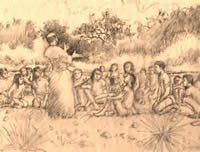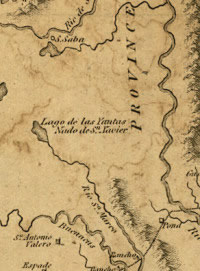San Francisco Xavier Missions
The San Francisco Xavier missions were part of a failed Spanish missionary enterprise along the southern margins of the Edwards plateau. The name, San Xavier, derives from the San Gabriel (San Xavier) River, where the original mission was established in 1748 at the behest of members of the Deadose, Ervipiame, Yojuane, and Mayeye Indians. From the Spanish viewpoint, there were several reasons why a mission in that location was attractive. In addition to converting native peoples to Christianity, the mission also would impede Indians leaving the San Antonio missions and joining those groups as well as help stop Native trading with the French. The mission saw modest success, with some 150 Indians living at the mission as 1750 and 77 baptisms performed over the two-year period since its founding. Attacks by the Lipan Apache, drought, and epidemics, however, prompted Capt. Pedro de Rábago y Terán, the commander of the nearby presidio, to move the mission complex to the San Marcos River in 1755.
There, more than 1,000 Lipan Apaches sought to join the missionaries, overwhelming the resources available. A year later, the mission and presidio were closed and property sent to Mission Santa Cruz de San Sabá, a mission deep in Lipan territory on the San Saba River. A third mission, San Francisco Xavier, was established for the Mayeye on the Guadalupe River, near the site of present-day New Braunfels, but it lasted only two years.

